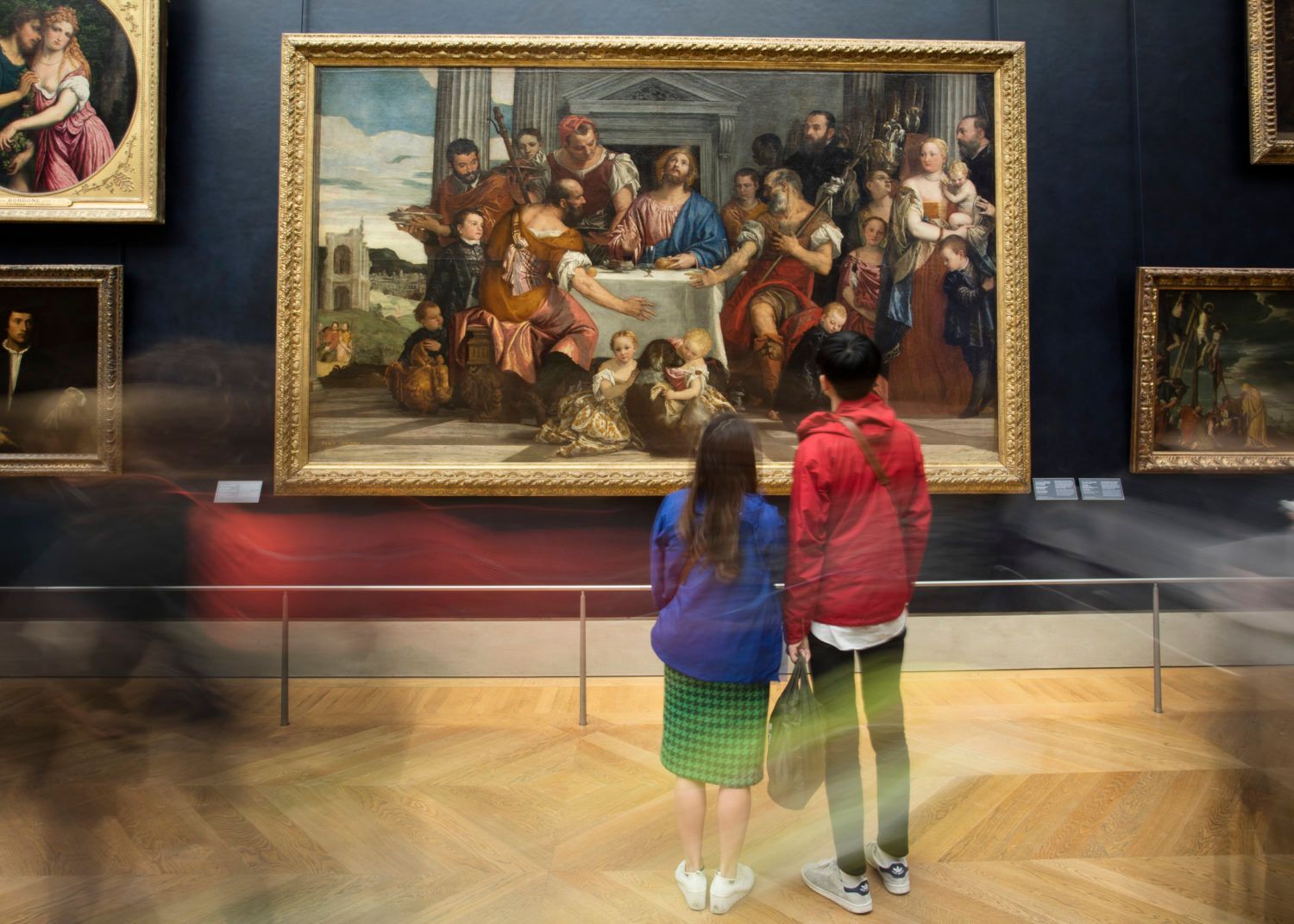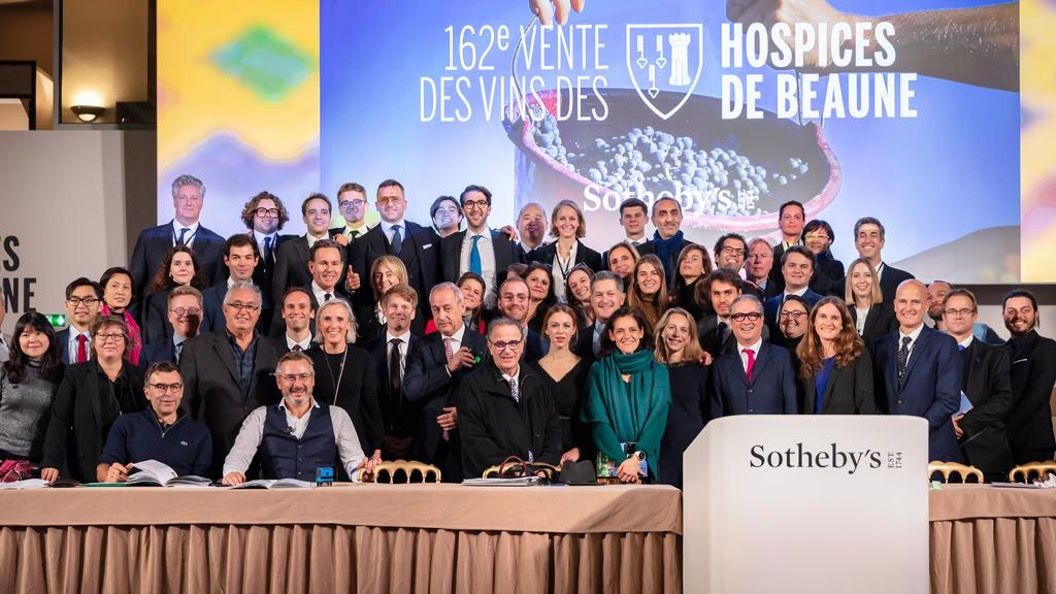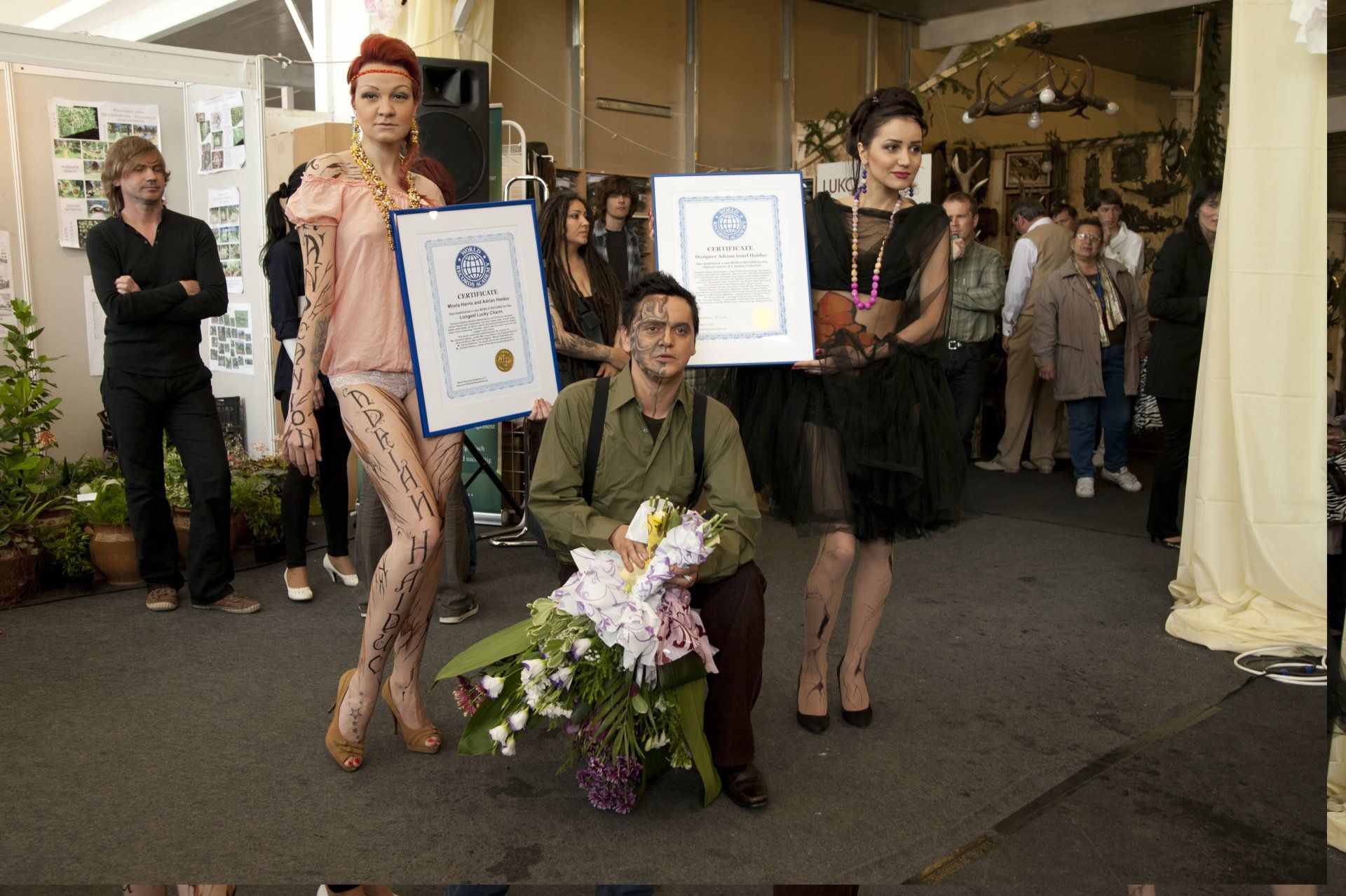World's most visited monument with an entrance fee: The Eiffel Tower

Paris, France--The Eiffel Tower, nicknamed "La dame de fer" (French for "Iron Lady"), a wrought-iron lattice tower on the Champ de Mars in Paris, France, was named after the engineer Gustave Eiffel, whose company designed and built the tower; named part of a UNESCO World Heritage Site, the tower received 5,889,000 visitors in 2022, setting the new world record for being the World's most visited monument with an entrance fee, according to the WORLD RECORD ACADEMY.
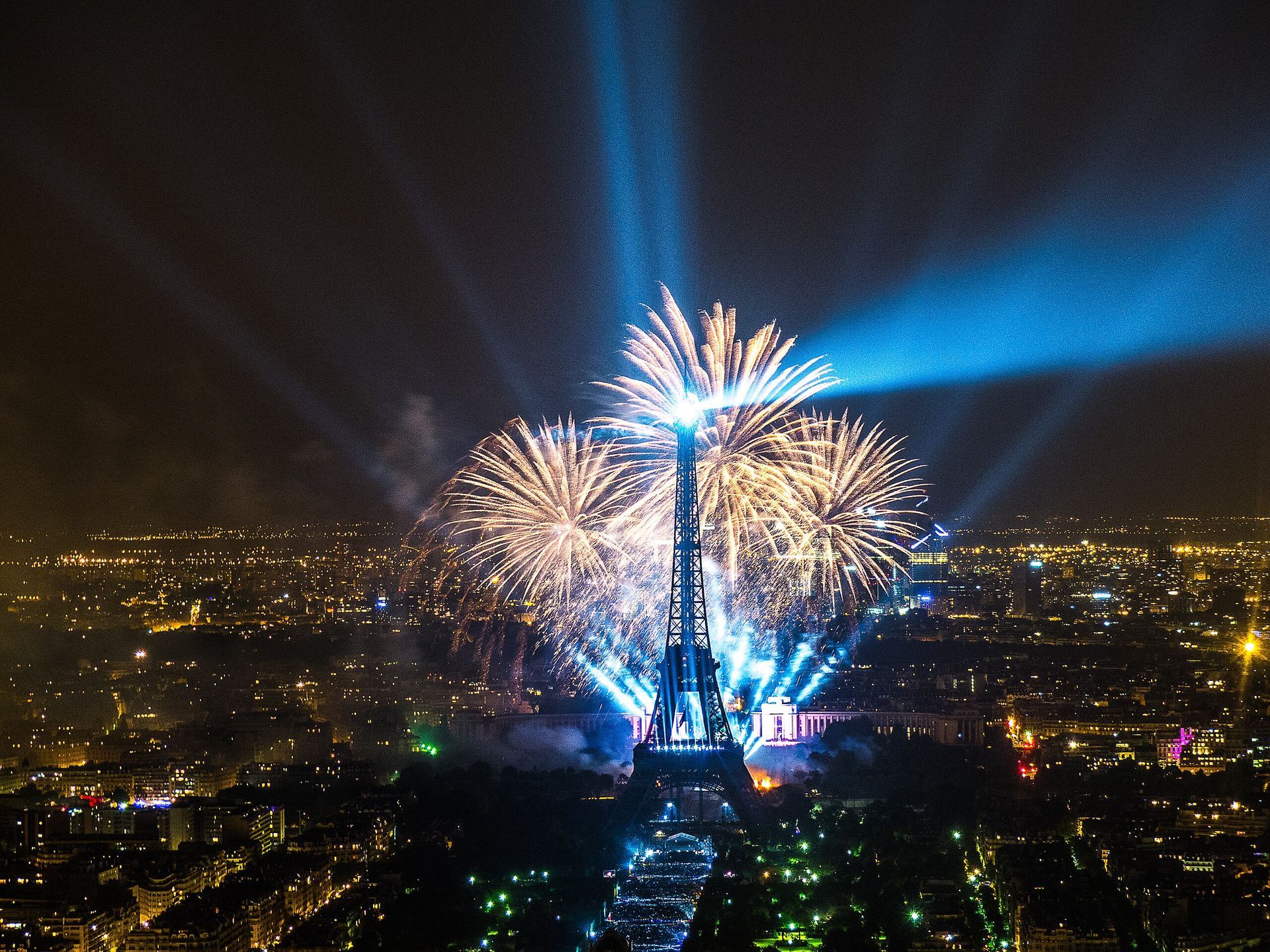
"The Eiffel Tower is a wrought-iron lattice tower on the Champ de Mars in Paris, France. Constructed from 1887, it is named after the engineer Gustave Eiffel, whose company designed and built the tower.
"Locally nicknamed "La dame de fer" (French for "Iron Lady"), it was constructed from 1887 to 1889 as the centerpiece of the 1889 World's Fair. Although initially criticised by some of France's leading artists and intellectuals for its design, it has since become a global cultural icon of France and one of the most recognizable structures in the world. The tower received 5,889,000 visitors in 2022, up by 197 percent from 2021, when numbers dropped due to the COVID virus.
The Eiffel Tower is the most visited monument with an entrance fee in the world: 6.91 million people ascended it in 2015. It was designated a monument historique in 1964, and was named part of a UNESCO World Heritage Site ("Paris, Banks of the Seine") in 1991.
"The tower is 330 metres (1,083 ft) tall, about the same height as an 81-storey building, and the tallest structure in Paris. Its base is square, measuring 125 metres (410 ft) on each side. During its construction, the Eiffel Tower surpassed the Washington Monument to become the tallest human-made structure in the world, a title it held for 41 years until the Chrysler Building in New York City was finished in 1930. It was the first structure in the world to surpass both the 200-metre and 300-metre mark in height. Due to the addition of a broadcasting aerial at the top of the tower in 1957, it is now taller than the Chrysler Building by 5.2 metres (17 ft). Excluding transmitters, the Eiffel Tower is the second tallest free-standing structure in France after the Millau Viaduct."
"More than 300 million people have visited the tower since it was completed in 1889. In 2015, there were 6.91 million visitors.The tower is the
most-visited paid monument in the world. An average of 25,000 people ascend the tower every day which can result in long queues."
(Wikipedia)
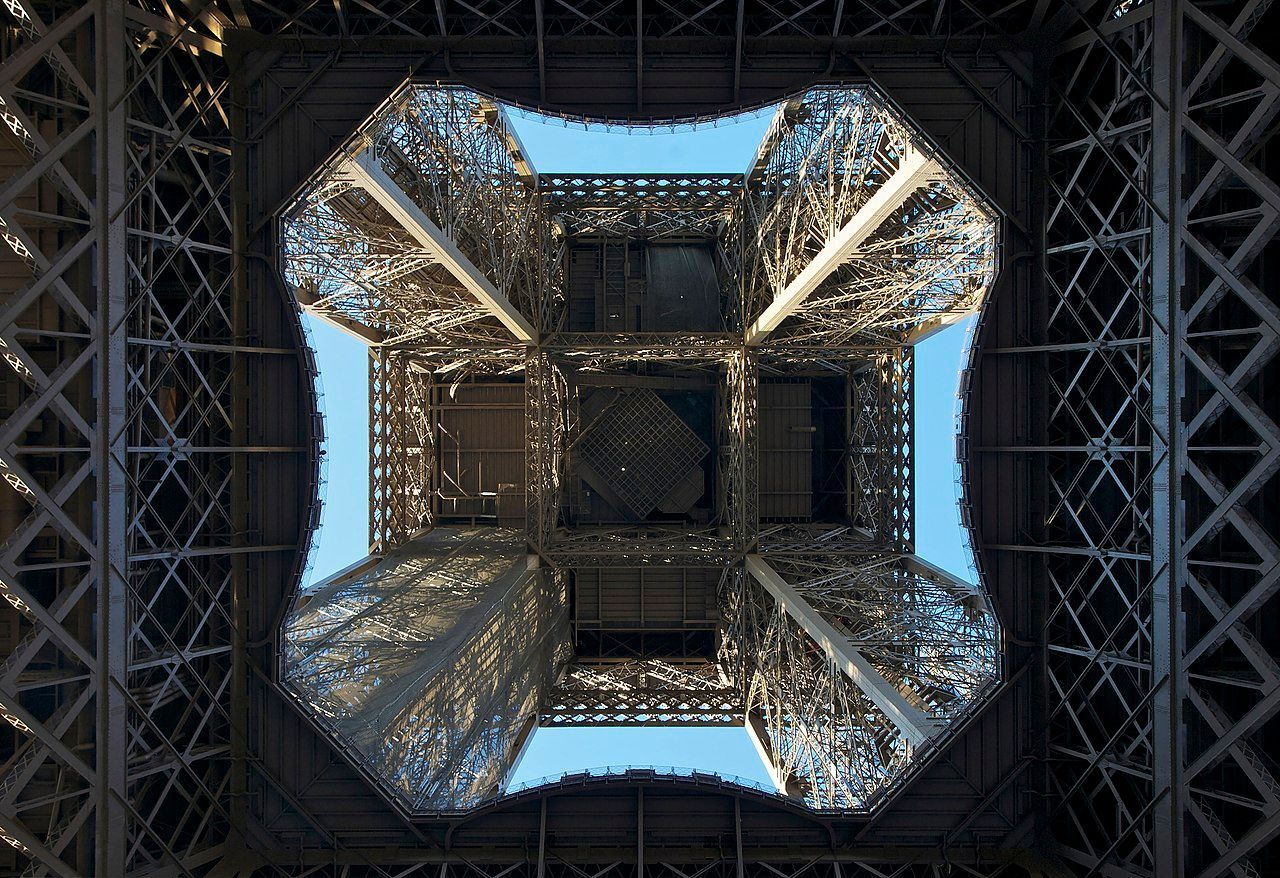
"The Eiffel Tower in Paris, France, was visited by 7,097,302 tourists in 2014, making it the most popular monument with an entrance fee. Since opening in 1889, an estimated figure of nearly 250 million people have visited the tower, which offers panoramic views of Paris from its 276-m-high (905-ft) viewing platform," the Guinness World Records says.
"Visitors can climb the 1,665 steps to the top or take one of the two duo-lift elevators. The basic cost for an adult visitor as of January 2015 was 9 euros ($9.63; £6.46) to reach the second-floor viewing platform and 15.50 euros ($16.56; £11.14) for a lift pass to the very top. Visitors to the Tower comprised 84% overseas tourists and 16% French.
"The top 10 nationalities were: France 15.8% (soit 2,5% de plus que l’année dernière), USA 11.9%, UK 7.5%, Italy 6.8%, Spain 6.7%, Germany 4.9%, Brazil 3.3%, Russia 2.8%, Netherlands 2.3% and India 2.2%."
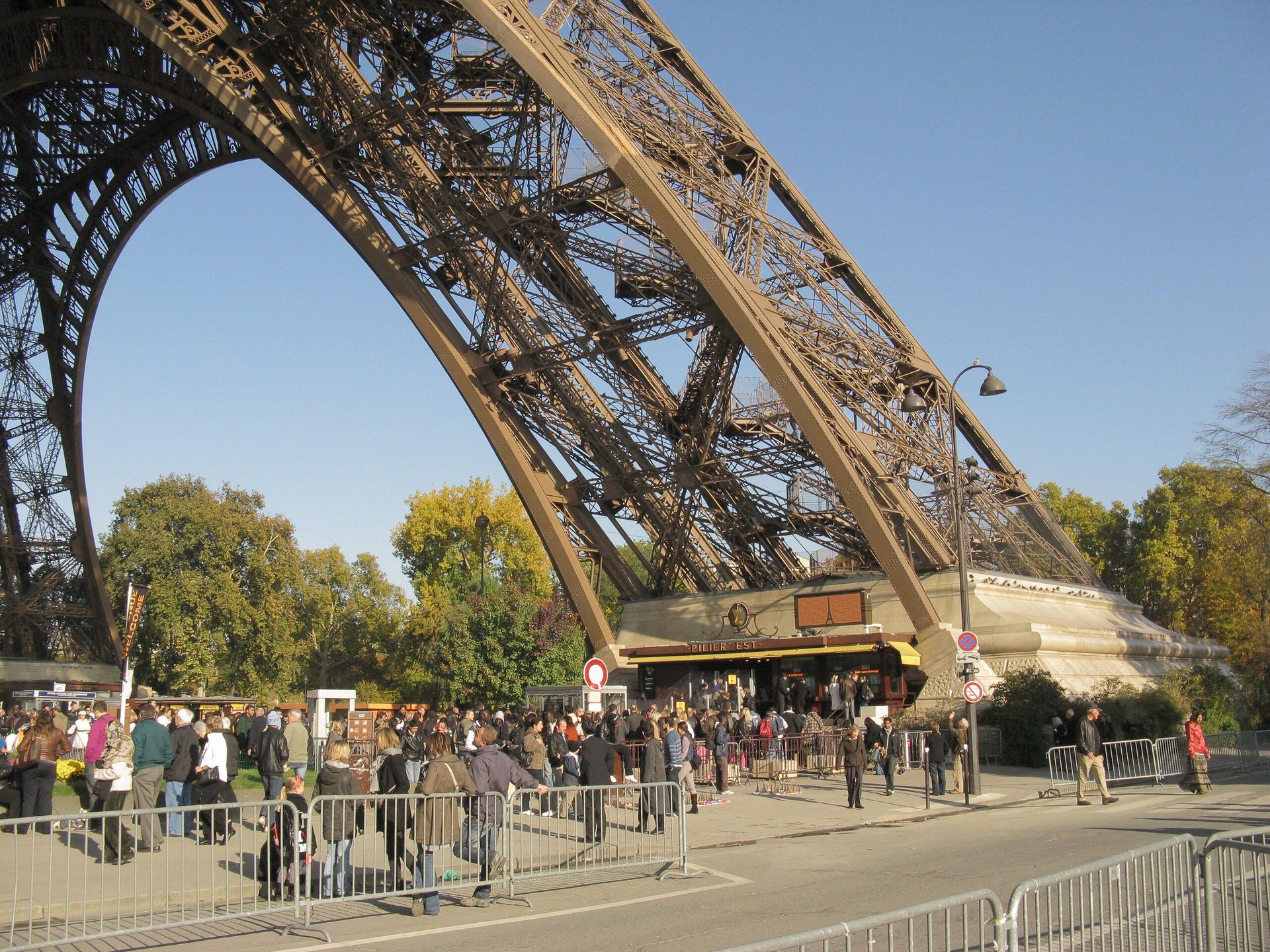
"The Eiffel Tower in Paris, France, has serious celeb status. Completed in March 1889, it's one of the most recognizable monuments in the world. And the site, which is also known as the Iron Lady, receives nearly seven millions tourists a year. But despite its fame, the tower has some monumental secrets. Get the lowdown on this Parisian highlight," the National Geographic Kids says.
"The top of the Eiffel Tower seems like the perfect spot to study stars and weather. No wonder Eiffel set up two small laboratories on the third level where astonomers and meteorologists could work. Eiffel conducted his own experiments as well. To learn more about how objects move against air, he dropped items attached to cords from the second level of the tower (about 380 feet aboveground) and observed how they fell.
"The Eiffel Tower was officially opened at the 1889 world's fair. First held in London, England, in 1851, world's fairs showcased cutting-edge inventions, architecture, and art from around the globe. The events have revealed many "futuristic" inventions, including the Ferris wheel, the television, x-ray machines, and ice cream cones. The world's fair, which is now called an expo, is held every three years in a different city and country around the world."

"All the elements were prepared in Eiffel’s factory located at Levallois-Perret on the outskirts of Paris. Each of the 18,000 pieces used to construct the Tower were specifically designed and calculated, traced out to an accuracy of a tenth of a millimetre and then put together forming new pieces around five metres each. A team of constructors, who had worked on the great metal viaduct projects, were responsible for the 150 to 300 workers on site assembling this gigantic erector set," the official website says.
"All the metal pieces of the tower are held together by rivets, a well-refined method of construction at the time the Tower was constructed. First the pieces were assembled in the factory using bolts, later to be replaced one by one with thermally assembled rivets, which contracted during cooling thus ensuring a very tight fit. A team of four men was needed for each rivet assembled: one to heat it up, another to hold it in place, a third to shape the head and a fourth to beat it with a sledgehammer. Only a third of the 2,500,000 rivets used in the construction of the Tower were inserted directly on site.
"The uprights rest on concrete foundations installed a few metres below ground-level on top of a layer of compacted gravel. Each corner edge rests on its own supporting block, applying to it a pressure of 3 to 4 kilograms per square centimetre, and each block is joined to the others by walls. On the Seine side of the construction, the builders used watertight metal caissons and injected compressed air, so that they were able to work below the level of the water."
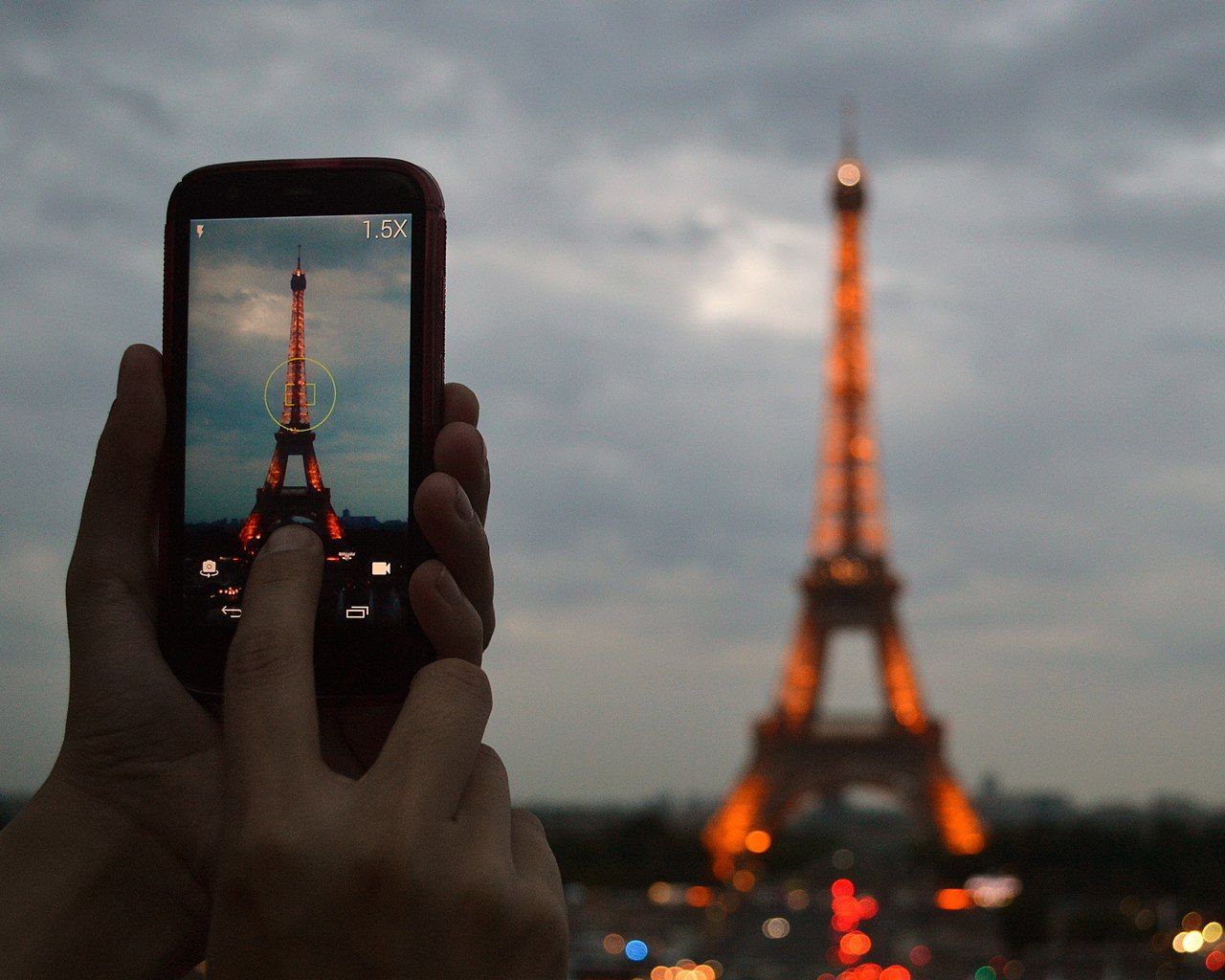
"Eiffel Tower, French Tour Eiffel, Parisian landmark that is also a technological masterpiece in building-construction history. When the French government was organizing the International Exposition of 1889 to celebrate the centenary of the French Revolution, a competition was held for designs for a suitable monument," the Britannica says.
"More than 100 plans were submitted, and the Centennial Committee accepted that of the noted bridge engineer Gustave Eiffel. Eiffel’s concept of a 300-metre (984-foot) tower built almost entirely of open-lattice wrought iron aroused amazement, skepticism, and no little opposition on aesthetic grounds. When completed, the tower served as the entrance gateway to the exposition.
"Nothing remotely like the Eiffel Tower had ever been built; it was twice as high as the dome of St. Peter’s in Rome or the Great Pyramid of Giza. In contrast to such older monuments, the tower was erected in only about two years (1887–89), with a small labour force, at slight cost. Making use of his advanced knowledge of the behaviour of metal arch and metal truss forms under loading, Eiffel designed a light, airy, but strong structure that presaged a revolution in civil engineering and architectural design. And, after it opened to the public on May 15, 1889, it ultimately vindicated itself aesthetically."
"The tower was built with the intent of showing off France's industrial prowess during the World's Fair, but the plan was to tear it down after 20 years. However, Eiffel cleverly put a radio antenna and wireless telegraph transmitter in the tower. After proving radio’s usefulness to the government in 1910, Eiffel was granted a 70-year extension to his lease. By 1980, of course, the tower had become an indelible symbol of both Paris and France, and it was in no danger of demolition," the Travel + Leisure says.
"As sculptor Frédéric-Auguste Bartholdi was designing “Liberty Enlightening the World”, he called upon his mentor, Eugène Viollet-le-Duc, to design the statue’s internal framework. After Viollet-le-Duc died in 1879, Bartholdi turned to Eiffel and Koechlin. They proved their iron expertise with Lady Liberty before moving on to the Iron Lady.
"Eiffel, an avid scientist, housed a meteorology lab on the tower's third floor. He was known to perform studies in physics and aerodynamics there, even building a wind tunnel at the foot of the structure. Eiffel opened the doors of the laboratory for other scientists to use for their experiments as well."
"The Eiffel Tower, built in commemoration of the French Revolution, was the tallest building in the world when it was unveiled at the Paris World's Fair in 1889. Although it has been surpassed in height by nearly a dozen skyscrapers since then, Alexandre-Gustave Eiffel's chocolate-brown, 984-foot open-lattice wrought-iron tower remains one of the world's premiere tourist attractions," the PBS says.
"Eiffel was one of the first engineers to recognize the importance of wind forces on tall structures. He designed the surface of his Tower to be so minimal that the wind has virtually nothing to grab onto. All pieces of the Tower form an open lattice of light trusses through which the wind can blow.
"The Eiffel Tower was one of the first tall structures in the world to contain passenger elevators, and tourists loved them. Elevator ticket sales in the Eiffel Tower regained almost the entire cost of the structure -- in just one year!"
Fast Facts:
- The Eiffel Tower is repainted every seven years -- with 50 tons of dark brown paint.
- Since it was unveiled at the Paris World's Fair in 1889, more than 167 million people have visited the Eiffel Tower.
- The names of 72 French scientists and other famous individuals are permanently affixed to the sides of the tower in 60-centimeter letters just beneath the first platform, with 18 names per side.
- Counting from the ground, there are 347 steps to the first level, 674 steps to the second level, and 1,710 steps to the small platform on the top of the tower.
- On a clear day, it is possible to see 42 miles in every direction from the top of the Eiffel Tower.
- The Eiffel Tower is twice as tall as the Washington Monument and weighs 70,000 tons less!
"When the project came to being, it had been established that the licensing rights linked to the convention for the tower’s construction would last only 20 years, followed by imminent destruction. However, two million people visited the Tower during the Universal Exposition," the Paris City Vision says.
"Following this incredible success, the building became a symbol of French industrial power. The Tower was as equally as successful during the 1900 Universal Exposition. Determined to avoid the Tower’s destruction, Gustave Eiffel went to great lengths to prove its scientific utility.
"Scientific experiments were conducted in the fields of astronomy and physiology but what would really save the Tower in the end was its use as a radio antenna tower, first for military communications and then for permanent, radiotelegraphy communications; in fact, the Tower served many a purpose during the First World War. The Eiffel Tower is part of the French History."
Reviews from TripAdvisor
"We climbed the steps to the 2nd floor and it was a great experience. Amazing views and gorgeous ice creams! Massive portions too."
"The tower was amazing! Well worth the visit. We did a guided tour and we went to the second level. The building is incredible and the views are spectacular!"
"Eifel tower is magical specially at night when Lights are n. In May tp September they switch on the light around 9:40pm. So this timme it's better to visit Eifel sharp at 10:45pm and wait till 11am to see the sprkling Eifel.For my opinion you can get best shot from Trocadéro(which is Metro stop as well). Once you out from metro just take left and there you can see the big giant standing far from you but view is awesome."
"We had a great experience. With tickets booked ahead online only one week ahead we got the lift to the summit. All the staff were efficient and friendly. We respect the staff for keeping a friendly approach in such a busy intensive environment."
"Wonderful place to go. This is the city of lights in Paris. The most beautiful attraction to visit in paris.The view is absolutely breathtaking."
"We went to the Eiffel Tour in the afternoon and it was a bit crowded, but it was amazing, we had a beautiful moment and even had the opportunity to drink a glass of champagne at the top ! Best place to watch Paris from above."
"This is a must activity for everyone visiting PARIS and we took the ticket upto Summit by Elevator. It was an amazing experience. Book in advance and go as late in the evening as possible, even at 10 PM is fine."
World's most visited monument with an entrance fee: The Eiffel Tower
Address: Champ de Mars, 5 Av. Anatole France, 75007 Paris, France
Facebook:
Tour Eiffel
Height: 300 m, 330 m to tip
Construction started: January 28, 1887 | Opened: March 31, 1889
Architects: Stephen Sauvestre, Émile Nouguier, Maurice Koechlin
website: https://www.toureiffel.paris/en
Photos: World's most visited monument with an entrance fee: The Eiffel Tower
(2) Wikipedia/Yann Caradec from Paris, France
(7)
